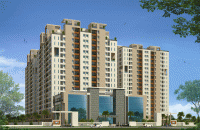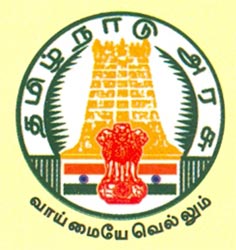Exploring War’s Effects on Indian Real Estate - When Conflict Meets
Concrete
By Dr. Prashant Thakur, Regional Director & Head –
Research, ANAROCK Group
War rarely leaves anything untouched, especially not real estate. We may
not necessarily be talking about decimated buildings - though those must be
factored in within the actual conflict zones. Armed conflicts generally have a
negative effect on economies, except if a country has reconfigured itself as a
'war economy'. Such economic reinvention happens only during protracted wars
and comes with several human costs.
Wars also stall construction and dampen end-user and investor
confidence. Aspiring homebuyers put decisions on hold. Retailers put a brake on
their expansion plans, and tourists postpone their travel plans. Real estate
markets adapt, pause, and then bounce back.
If we consider India's last two most significant military engagements —
the Indo-Pak war in 1971 and the Kargil war in 1999, we saw this process unfold
in all the four critical real estate sectors: residential, commercial, retail,
and hospitality.
War - The 'Real' Impact
War creates several economic effects and side-effects which impact the
real estate market in different ways:
1. Reduced end-user
and investor confidence - Homebuyers delay purchases, businesses
delay office leases, and investors seek safer havens like gold (and, these
days, cryptocurrencies)
2. Raw materials get
scarce - The key inputs for construction - steel and cement - may be
diverted to fortify the country's defence infrastructure, and/or see steep
price hikes
3. Government spending
pivots - Governments will spend more on its military and reduce spending
on infrastructure and consumer real estate
4. Capital values may
take a hit - While armed conflicts do not impact rentals much, housing
capital values may reduce because of lower demand
1971 Indo-Pak War: Construction Screeches to Standstill
The 13-day conflict in December 1971 did a lot more than redraw India's
borders — it brought the country's economy to a virtual standstill. There was a
huge dip in GDP growth - from 5.4% in FY1970 to 1% in FY1972. Simultaneously,
inflation spiked beyond 11% and construction was largely restricted to military
sites.
- Impact
on the Housing Market
In the financial capital of Mumbai - then Bombay - the state government
put an iron grip on cement and steel, which resulted in a 12% reduction in the
approval of housing projects. Thankfully, the rent control laws remained
unyielding, so housing rental rates did not spike even though inflation raged
out of control. Not surprisingly, property registrations in the city reduced by
almost 10% in 1971.
- Impact
on Commercial Real Estate
There were no FDI inflows worth mentioning, the development of private
office spaces came to a grinding halt. Locations like Mumbai's Fort area and
Delhi's Connaught Place saw massive vacancy rates - however, office rentals did
not sink because of the limited supply, and due to inflexible regulations.
- Impact
on Retail Real Estate
Back in 1971, India's high-street retail scene was mostly unorganised
and uncharted, but local shops in Old Delhi and Kolkata saw a significant drop
in footfalls. According to available court records from 1971, shop rent
disputes in Mumbai rose by 18% due to increased stress among tenants.
- Impact
on Hospitality Real Estate
Unsurprisingly, tourism in India was impacted by the war. From 2.02
million in 1970, Foreign Tourist Arrivals (FTAs) reduced to 1.96 million in
1971. In Delhi, hotel occupancy dropped to under 45% and even the hospitality
major of the day - the Indian Hotels Company - saw revenues drop in
double-digits, especially in areas that were directly affected by the way -
especially Srinagar.
The 1999 Kargil War: A Short but Hard Impact
The Kargil standoff, which latest three months, resulted in considerable
short-term market panic. However, India’s economy was liberalised and far more
resilient by then, and recovered quickly.
- Impact
on the Housing Market
The 1999, the country's real estate market was already reeling under the
impact of the Asian financial crisis. This time, housing rental values did take
a direct hit - in Delhi and Mumbai’s prime residential locations, rental values
plummeted by anywhere between 3–8% in these three months and bottomed out by
1999-end. Interestingly, despite the conflict and all its ramifications, luxury
apartments in Mumbai's Cuffe Parade still commanded then-handsome prices of
between INR 20,000-23,200/sq.ft.
- Impact
on Commercial Real Estate
1999 saw approx. 4.8 million sq. ft. of new office space hitting the
main cities. In CBDs like Connaught Place, vacancies increased anywhere between
11-15% and rentals dropped marginally. Large international companies did not
cancel their leases, but did defer them in most cases.
Back then, Bengaluru was not yet India's fully-established Silicon
Valley, but places like Koramangala had full-fledged IT parks which saw
undeterred leasing at rents ranging between INR ₹35–65/sq. ft./month.
- Impact
on Retail Real Estate
The Kargil war coincided by the finishing touches being made to the
country's pioneering malls - Mumbai's Crossroads and Delhi's Ansal Plaza.
Premium retail real estate, a shiny novelty in 1999, commanded higher rents
than commercial real estate, but the conflict prompted most enlisted retailers
to put their store openings on hold.
- Impact
on Hospitality Real Estate
Surprisingly, except in the directly affected regions, the tourism
industry remained remarkably robust. 1999 saw a 5.3% increase in Free Trade
Agreements (FTAs), thanks largely due to the then-incumbent government’s push
to tourism and also a subdued rupee. North India saw spiralling hotel
cancellations to the tune of anywhere between 20–30% in these three months.
Hotels in Delhi and Kashmir took a major body blow, with MICE bookings getting
cancelled en masse. Interestingly, Kargil became a popular tourism
destination after peace was restored and by 2003, saw its tourist footfall
double to 44,000/year over the pre-war numbers.
Real Estate Resilience – What Lies Beneath
India's real estate market benefited from three major factors after both
these wars - pent-up demand (the need for homes and offices obviously
continued), stricter regulations (RBI’s conservative lending norms kept
leverage low, which helped curtail panic), and quick stock market recover.
While the Nifty dropped approximately 5% at various points of these two
conflicts, it snapped back within 5-6 months to deliver positive returns.
Today - The Costs of Escalation
If the current conflict broadens, we should be prepared for certain
ramifications:
- Housing - Residential
absorption in Delhi-NCR and other parts of north India may witness a
short-term dip of between 5–10%. Luxury housing buyers tend to delay
purchases in periods of uncertainty. Demand for mid-income housing will be
the first to recover once normalcy is restored. However, prices of cement
and steel would remain elevated over the medium term unless the government
intervenes.
- Commercial
real estate -
If the conflict persists or widens, we can reasonably expect MNCs to put
their entry/expansion plans into India on temporary hold. This would
obviously impact absorption numbers, but long-term demand — most notably
from the GCC, BFSI and IT sectors - will return and strengthen within 12
months or less.
- Retail
real estate - Larger malls
have less to worry about because of long-term leases and also rent-waiver
clauses. They can therefore weather such a storm more adroitly than
high-street retail. We may see a drop in footfall and store launches being
postponed. Nevertheless, India's consumption will overcome these odds
quickly and Indian retailers have perfected the art of nimbleness during
COVID-19 - expect highly imaginative promotions to draw the crowds back in.
- Hospitality
real estate - Naturally,
Delhi, Kashmir, and other impacted regions are going to see a flurry of
cancellations if the conflict persists or widens. We may see hotel
occupancies drop by anywhere between 10-15% in these areas. However,
domestic leisure travel — which accounts for almost 90% of room-nights —
will not flounder and we can definitely expect a massive surge
of 'victory tourism' such as was seen in Kargil once hostilities cease.
Prices and Rentals
We do not expect any significant drop in housing capital values unless
hostilities stretch longer than one fiscal year. Today’s market is dominated by
large, listed and financially robust developers who do not carry excessive
leverage. This gives them prolonged 'holding power', and the major banks also
are well-capitalised. There may be a pause on price hikes, followed by a sharp
hike in prices on account of higher construction costs next year.
The Bottom Line
If past wars and conflicts have taught us anything, it is this - they
can temporarily slow down sentiment and freeze decisions, but they cannot break
India's real estate market. In 1971, Mumbai (then Bombay) was deploying the
satellite city Navi Mumbai even as the war raged on. In 1999, the demand for
luxury homes continued unabated, the first malls threw open their doors, and
revenge tourism plans were being charted even before the war ended.
We may see some short-term sluggishness in the market, but there is no
question of an outright plunge. Much has changed since the bombs last flew at
scale - the country's economy has strengthened considerably, its real estate
sector has become more disciplined and regulated, and homebuyers showed their
strongest side during what was expected to be the death-knell of the housing
market - COVID-19.
We are good to go, for the short or the long haul.

























